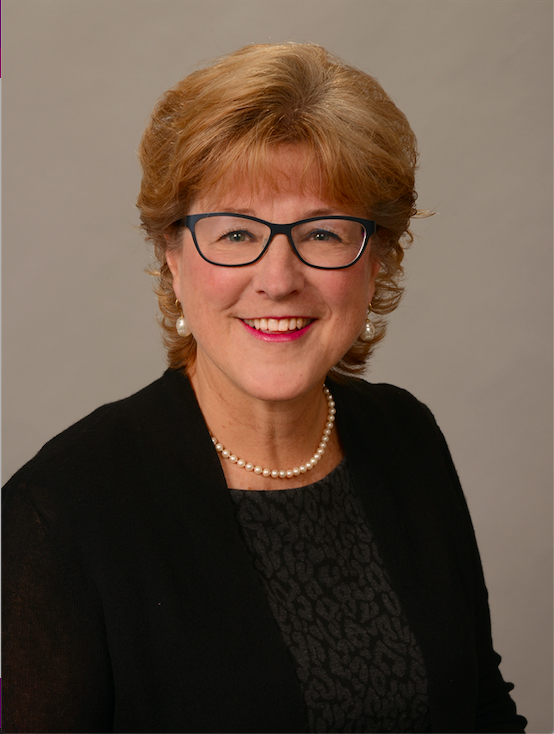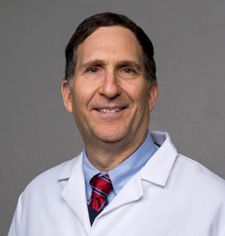News
Article
The Future of Disease-Modifying Therapies for Patients With SMA
Author(s):
Key Takeaways
- Significant unmet needs in SMA management include therapy access, fatigue, reproductive health, and emerging phenotypes in older patients.
- Intrathecal gene therapy offers potential for older SMA patients, but safety, efficacy, and patient age considerations are critical.
Despite significant advancements in spinal muscular atrophy (SMA) management, unmet needs persist, especially for patients aged 2 and older without early treatment.
Spinal muscular atrophy (SMA) management continues to evolve, but significant unmet needs remain, particularly for patients aged 2 years and older who have not received early disease-modifying treatments. In a recent interview, Julie Parsons, MD, professor of clinical pediatrics and neurology and co-director of the Neuromuscular Clinic at the Children’s Hospital Colorado, highlighted key challenges, including access to therapies, fatigue in young adults, reproductive health concerns, emerging SMA phenotypes, and systemic metabolic issues.
Julie Parsons, MD

She also discussed the potential role of intrathecal gene therapy in reshaping treatment options for older patients and the complexities of clinical trial data interpretation. The ongoing STEER study offers critical insights into the safety and efficacy of such therapies, shedding light on the future of SMA treatment.1
AJMC: What are the current unmet needs in the management of patients 2 years and older living with SMA?
Parsons: When we say 2 years and older, we're typically looking at patients who have not had urgent therapy with disease-modifying treatments for SMA. As we look at the patients that are a little bit older, there are a couple of things that come up. One is, does everybody have access to disease-modifying therapies? I think that's an important question. The other is what are the issues that most patients with SMA have, particularly as they get older? For young adults, it’s fatigue. That's an unmet need that we still haven't found a great way to treat.
We're also considering reproductive risks. What happens with patients with SMA who are on disease-modifying therapies and choose to have a family? Even though we thought initially that spinal muscular atrophy was simply a motor neuron disease, there are some systemic issues that we see in patients with SMA. If we go back to reproductive concerns, there have been some interesting studies looking at male patients with SMA who may have issues with spermatogenesis or azoospermia and have a little bit more difficulty in terms of some of the fertility concerns. Women with SMA need to consider use of DMTs during pregnancy, and may need high risk obstetric care when they become pregnant.
We look at the new phenotypes that are developing, even in our patients that have been treated early on with the disease-modifying therapies. We're seeing very young patients develop very severe, progressive scoliosis, even under the age of 2 years. What do we do about those patients and how do we manage them?
Bulbar issues, feeding and breathing, is another area that as patients get older, we look to see whether the disease-modifying therapies are making a significant impact. And if they're not, what can we do to try to treat those issues?
There is very interesting new information that is coming out around neurocognitive issues in patients, particularly the patients with type 1 SMA or patients with lower SMN copy numbers who have maybe 1 or 2 copies of SMN 2. That's something that we didn't think about, partly because previously those patients had such a shortened lifespan. We also couldn’t do very effective testing because it was difficult to communicate and do adequate evaluations with patients that didn’t have verbal abilities because of profound weakness. So there are new insights from research in this area that are forthcoming.
Currently, we try to think about spinal muscular atrophy as being more of a systemic disorder, and we know that patients with SMA have some metabolic issues. They have difficulty with glycogen and glucose metabolism. They can't be without nutrition or glucose for an extended period of time because they get hypoglycemic quickly. We still have a lot to learn about spinal muscular atrophy, even with new phenotypes of patients who are treated with disease-modifying therapies.
AJMC: How would an intrathecal therapy for patients 2 years and older alter the SMA treatment landscape?
Parsons: I think it's a little bit more complicated than one would think. In the US, all states have the ability to screen babies for spinal muscular atrophy. We consider treating those babies to be an urgent issue, and if they have low copy numbers, we can consider that to be an emergent issue . We try to get babies treated by the age of 14 to 21 days old. The only gene transfer treatment that we have available right now is onasemnogene abeparvovec-xioi (Zolgensma) therapy. Currently in the US, the majority of patients under the age of 2 years will be treated with gene transfer therapy. Consequently that prevents those patients from being eligible for any kind of intrathecal therapy with onasemnogene.
When considering patients 2 years and older for intrathecal therapy, the factors we must consider are the safety issues and whether it’s worth using an intrathecal gene transfer therapy vs the currently approved and available oral or intrathecal antisense oligonucleotide therapies. Next we have to look at the efficacy. Is it more efficacious than another approved therapy? We have to weigh the risk benefit profile of using an intrathecal gene transfer therapy. If it truly were safe and effective, an advantage would be administering the therapy 1 time, which could have great implications for particularly for older patients being treated. Theoretically, there would be less of an immunogenic response with intrathecal therapy. If the agent were really confined to the cerebrospinal fluid space there may be less of an immune response, making it a safer agent. If that were the case, it would be a positive for intrathecal gene transfer therapy.
It's complicated in terms of where intrathecal gene transfer therapy would fit into a treatment regimen based onthe clinical trials that I'm aware of. The STEER trial enrolled patients who were two or older but younger than 18 years old.1 Is it safe to treat a 60-year-old with intrathecal therapy? How about a 30-year-old or a 40-year-old? Do we have the data on that? I haven't yet seen the data , so I'm not sure about the patient population and age group that would be best to target for treatment with intrathecal therapy.
AJMC: Can you provide a detailed overview of the STEER study's design, including its objectives, methodology, and any available data on key outcomes?
Parsons: The STEER trial looked at patients who were ages 2 to 18 years. The trial was a randomized, sham-control, double-blind trial looking at safety, tolerability and efficacy of intrathecal therapy with onasemnogene in a very specific population of patients who had never walked, so they were nonambulatory and they were treatment naive. They had not been treated with any other disease-modifying therapy, so this was a very specific group of patients who were enrolled.
The patients were randomized to treatment in a 3:2 ratio. Treatment group 1 was followed for 52 weeks, and treatment group 2 was followed for 12 weeks. Patients who were not treated initially with onasemnogene in the double-blind control, ended up being rolled into treatment. So the patients were followed for 64 weeks total. The trial met its primary end point, which was that there was an improvement in the Hammersmith scores by more than 3 points. This is a scale used in many SMA studies looking at motor function, so that was positive.
Secondary endpoints looked at patients’ hand, fine motor and upper extremity use, using the Revised Upper Limb Module test. I haven't seen the data for this yet from the STEER trial. I think that it will be important as the data come out from the STEER trial to look at a couple of things. One is looking at response rates for patients by age. Do the younger patients do better than the older patients or differ by their presenting level of function?
How have Hammersmith scores changed over time in different age groups and in patients with different SMN 2 copy numbers? If patients have 2 copies, what is their response rate? If they have 3 or 4 copies, what's their response rate? I think it'll be very interesting to see that stratified data and the benefit for those patients.
My understanding is that, at least with what's been released so far, there is no difference in terms of safety profile issues with intrathecal onasemnogene, but there are still data that remain to be seen. If this agent is offered to the general public and made broadly available, what kind of adverse events will we see? We know that with systemically delivered onasemnogene, some patients have experienced acute, severe liver injury, thrombocytopenia, and thrombotic microangiopathy. I haven’t even seen the data for the STEER trial to know specifically what adverse events and severe adverse events were seen in that population.
AJMC: When examining clinical trial data for SMA, which end points do you find most important and why?
Parsons: When I look at clinical trial data, I really look at safety and efficacy. I think that those are the most important things: is an agent safe and does it work. And if it works, how well does it work? Really examining the evidence is very important. You have to look specifically at the population that is being tested. So, if something is working in a 2-year-old, it doesn't necessarily mean that it's going to have the same benefit in a 14-year-old, a 30-year-old, or a 60-year-old. I think it's important to look at the patient population and really consider the evidence in the clinical trial specifically. But safety and efficacy are huge for gene transfer therapy.
There is a small population of patients who were treated in the phase 1 trials with intravenous onasemnogene. Now, we're about 10 years out, so we can look and say whether this gene transfer product is durable over time. We will know more as more time passes and we follow these patients to determine the agent’s durability. I think that's always an important question.
From a patient standpoint, I think it's important to ask the patients what they think and how they benefit, because they don't really care about a Hammersmith score. What they really care about is what activities they can do in their daily lives. Are they able to eat? Are they able to breathe? Are they able to open doors? Are they able to carry dishes? Are they able to go to school or to work? I think looking at motor function scores are obviously important for providers to measure but from a patient standpoint, what kind of activities of daily living does the patient feel are important? Are they able to drive their power chair? Can they roll over in bed? Can they stoop down from their chair and pick something up? What do things look like for those patients? Those are some of the things that I think about in terms of outcomes.
AJMC: In the next 5 years, how do you see the treatment landscape of SMA changing, especially with the introduction of new approvals and mechanisms of action?
Parsons: Ultimately, we're going to get into a situation where we're going to be using combination therapies. In my opinion, we will not end up having a single disease-modifying therapy. There have not been any cures developed so far. I think we will either use gene transfer therapy like onasemnogene and maybe a treatment that targets motor and muscle function in addition to that. For instance, we now have some clinical trials that are ongoing for apitegromab and taldefgrobep, both of which are anti-myostatin and anti-promyostatin trials. These trials investigate whether we can increase muscle force, therefore, increasing strength and potentially decreasing fatigue in patients with SMA. Fatigue is just such a huge overriding issue with patients with SMA. I think that we will have either nusinersen or risdiplam, or possibly intrathecal onasemnogene, used in conjunction with a muscle-directed therapy—so an SMN-directed therapy and a non SMN or muscle-directed therapy-- used in combination together in the patients that need that.
Because we have newborn screening and we're able to treat patients at such an early age, we have a population of patients that do amazingly well, and we'll have to wait and see how a baby who's treated as a newborn does over time. How long does this treatment and its benefits last? How will puberty affect changes? Will we see changes when these little babies become 20-year-olds? We don't really have the answers yet.
I think the other situation would be in patients who have had treatment with onasemnogene, which may transfect only about 60% of motor neurons. Is it possible in patients who don't have a robust response to onasemnogene to add another disease-modifying therapy, such as the risdiplam or nusinersen? There are 2 such clinical trials that are ongoing. One is adding risdiplam to patients who were treated with onasemnogene and haven't had an expected response, and the other has been adding nusinersen as a rescue for patients who were treated with onasemnogene and didn't have a robust response. The results of those 2 trials will be very interesting to see if it’s possible to use in patients treated with gene transfer therapy who need a little boost. Possibly we can hit a larger population of motor neurons usingthe antisense nucleotide or small molecule compound. Would we then create a combination therapy using gene transfer therapy plus a disease-modifying therapy targeting SMN 2? I think there are going to be some more combination therapies in the future, which I'm in favor of using if it makes rational sense. We have tohave evidence that specific combination therapies are beneficial and safe.
There are other agents that are being looked at that will target fast twitch muscle fibers to see whether the contractility of muscles can be affected and enhanced. I would see that in the future there will be a broader menu of choices for treatments for patients with SMA, never forgetting that the foundational treatment is really the care consideration guidelines for patients to be treated by a multidisciplinary team. We know that just by instituting care guidelines the lives of patients with spinal muscular atrophy have been extended. That's also foundational.
Reference
1. Efficacy and safety of intrathecal OAV101 (AVXS-101) in pediatric patients with type 2 spinal muscular atrophy (SMA) (STEER). ClinicalTrials.gov. Updated March 21, 2025. Accessed April 4, 2025. https://clinicaltrials.gov/study/NCT05089656

Understanding SMA Subtypes and the Impact of Treatment Advances

Redefining Functional Measures in SMA: Insights From Clinical Research

